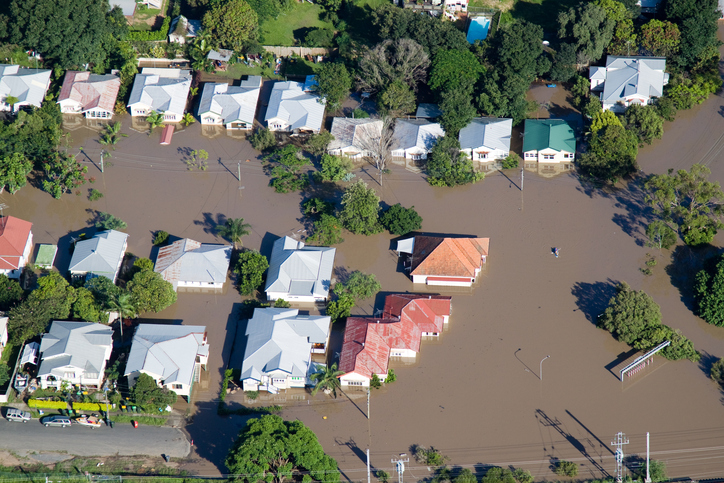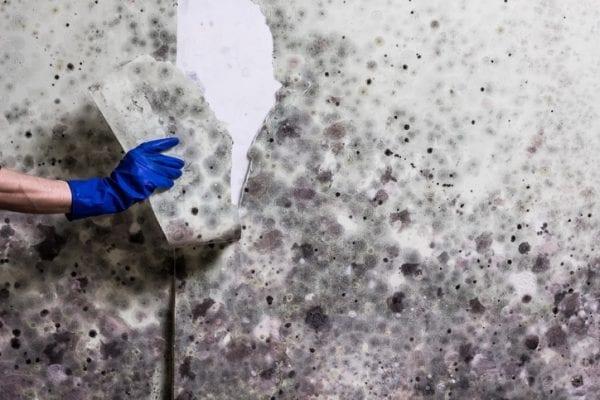After severe storms and flooding, property owners are often dismayed to learn that their insurance policies don’t necessarily cover all of the damage. The most common point of confusion relates to water damage, which may or may not be covered by a standard policy, depending on how the water damage was incurred.
It’s often up to an insurance adjuster to evaluate the water damage and determine whether it is covered under a standard policy, a separate flood policy, or not covered at all.
Here’s what you need to know about how that determination is made, and how to mitigate the risk of angry owners contesting the decision.
Ground or Sky?
One of the most important determiners for whether water damage is covered under a standard property insurance policy is whether the water impacts came from the ground or the sky.
Tides, waves, storm surges, and floods are primary examples of water that comes from the ground. In most cases, water damage from tides and floods are not covered under a standard policy.
Water that comes from the sky may or may not be covered. Wind-driven rain from a hurricane or severe storm will often not be covered under a standard policy, but there is an important exception. If the structure was damaged by the storm, and that damage allowed the water infiltration that led to the damage, then it usually will be covered. Damage from the storm might include falling branches or wind-driven debris that cause breaches in the building envelope.
By the same token, water that comes from sewer backups, burst pipes, and other problems arising from within the structure or its associated systems, usually will be covered by a standard policy. However, if the water damage is from a slowly leaking pipe, which is deemed a maintenance issue, rather than a pipe break, then it usually would not be covered.
It’s important for property owners and adjusters to understand the details of their specific insurance policy, as some policies cover water damage more broadly than others.
How The Determination is Made
Determining which water losses are covered begins with a damage assessment. Confusion often arises when there has been both flooding and wind-driven rain, and this is a common source of disputes between owners and insurance companies.
Assessors must look at the pattern of the water damage and storm-related damage to understand which damage is covered under the standard policy and which damage is covered by a separate flood policy (or not at all).
Flood damage will often leave tell-tale signs such as high water lines, composed of dirt, sludge, and debris that is left behind after the flooding recedes. This makes the damage easy to distinguish from wind-driven rain, which will leave a more uniform spray pattern.
They must also look for the cause of the infiltration. If the property has sustained damage from falling branches, debris, or other non-water causes, and that damage led to the water’s infiltration, that may indicate a covered loss. On the other hand, if the water was blown in through windows, chimneys, and other undamaged openings, then it probably is not.
In the event of a disaster scenario such as after a hurricane, assessors may also have to evaluate whether burst pipes and other structural problems caused the water damage. In those cases, the standard policy may be responsible for covering some or all of the damage.
Limitations of Flood Policies
Properties that lie in areas designated by the National Flood Insurance Program (NFIP) as hundred-year flood zones are usually required to carry separate flood insurance through NFIP. Properties in low-lying or otherwise vulnerable locations may also be eligible for flood insurance through NFIP even if it’s not required.
However, due to high cost and general lack of knowledge, most owners whose properties do not lie in designated flood zones do not purchase this separate insurance, which is often a source of dismay–and disputes–following a major disaster.
Even for those properties that are covered by a flood policy, there are limitations on dollar amounts and what types of contents and systems are covered by the policy. It’s important for adjusters to understand not only which policy covers each portion of damage, but the limits of that coverage.
Having a knowledgeable and experienced assessment partner to help unravel the causes and origins of water damage can be invaluable for adjusters. The right partner can get on site quickly, assess the types of damage, and make recommendations that mitigate the risk of owners contesting the decision.
At GLE, we’ve been performing water loss assessments for more than 30 years. We’d love to be your partner in disaster assessment and recovery. Contact us today.





